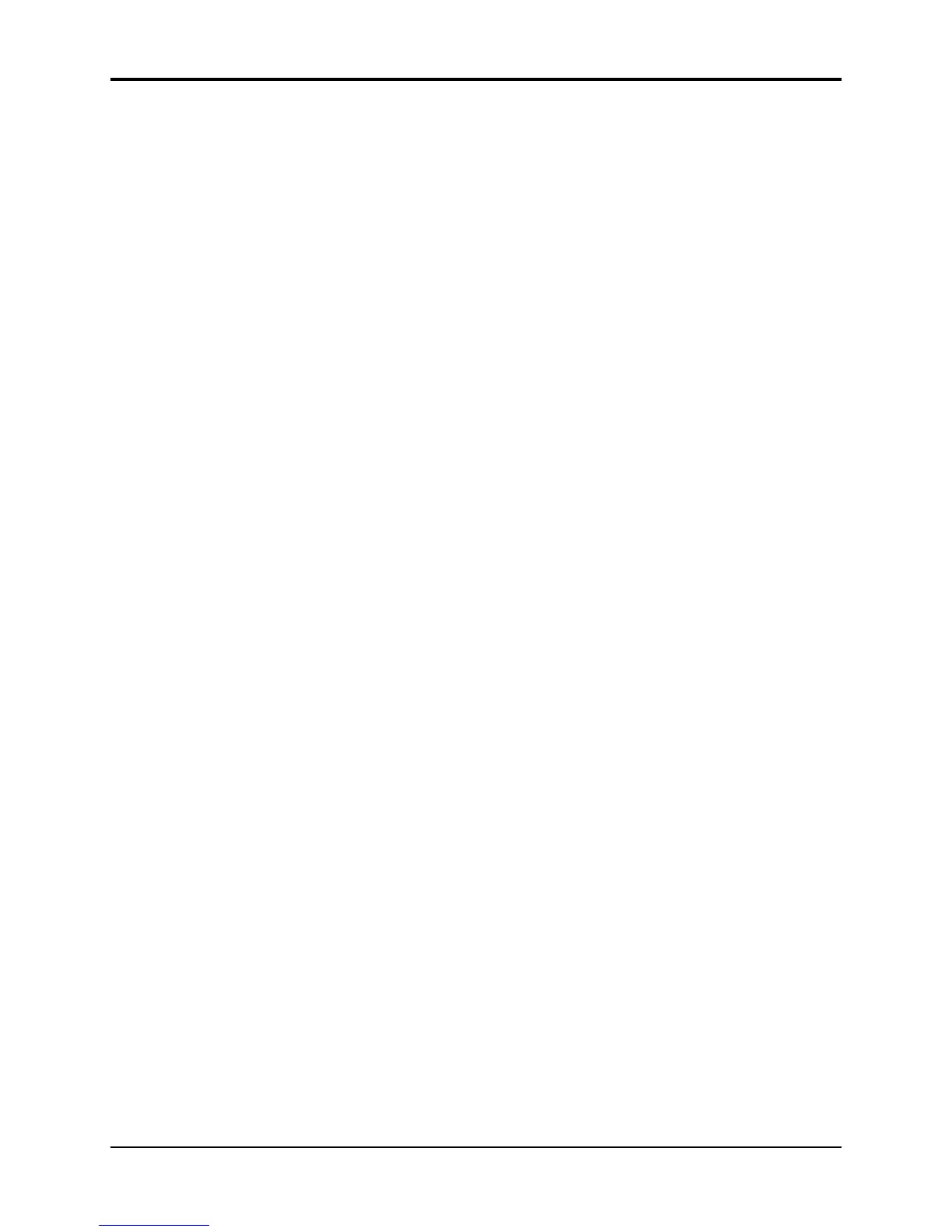TS-12 Musician’s Manual Section 11 — Sequencer Parameters
13
Using the Quantize Options
Percentage quantization can be used to “tighten up” a track without placing everything exactly
on a quantize point. This can make loose tracks sound tighter without sounding mechanical. It’s
especially useful on passages where you want to play constantly ahead of or behind the beat.
You can quantize the track to tighten up the looseness, yet still retain the rushed or laid back feel.
Keep in mind that percentage quantization can be done in stages. For example, quantize a track
to 25% and keep it. Then later, if you decide you want it tighter still, quantize it again by 25%.
Each time you perform a quantization, you will move the key events slightly closer to the
quantize point.
Random quantization is useful for taking old tracks that have been quantized 100% and giving
them a more human feel. This can be done by quantizing with the desired randomization factor.
The higher the RANDOM factor, the looser the track will become (since the tracks have
previously been quantized to the 100% quantize points, the PERCENT parameter will have no
effect). Tracks that have not been quantized can be randomized as well. If your desired effect is
simply to loosen a current track, select a quantize PERCENT of zero, and quantize with the
desired randomization. This will shift each event in the track within a few clocks of its original
place, but will not necessarily move it towards the quantize point.
In addition, the RANDOM parameter inside the TS-12 “reseeds” itself. This means that if you
quantize two identical tracks with randomization, you will get different results. Also, if you set
the PERCENT parameter to zero, you can randomize a track, keep the new track, and randomize
it again to get things progressively looser.
Although PERCENT, RANDOM, and SWING are interrelated, you do not have to use all of them
when selecting options. By setting these parameters to their default values (PERCENT=100 -
RANDOM=0 - SWING=50), you can use any one or combination of these options to quantize
your tracks.
Important:
An event can be randomized and end up closer to a different quantize point. This could be a
problem if you later decided to go back to a straight, no-frills quantization. This is not a fault of
the quantization feature, but simply what can happen with randomization. The random factor is
purposely kept low to prevent this from happening, however, there are cases where this can
occur. One example would be successive randomization with the PERCENT parameter set to
zero. Another instance involves using combinations of a high SWING parameter with a high
RANDOM factor.
For example, let’s say you have a hi-hat track that’s already been quantized to straight eighths.
Now you decide to give it a large swing feel, so you set SWING to 74. Any event that was at
clock number 49 (a straight eighth note) would move to clock 72. But if you also specified a
RANDOM of 3, the event may move as far as clock 75. Now let’s suppose you keep this track,
but then later on decide that you don’t want a swing feel. So you setup a straight 1/8 note
quantize. Only this time, the event that originally was at clock 49 is now at clock 75, so it would
be moved to the next quantize point at clock 1 in the next beat (since that’s the closest quantize
point to that event). If you audition the track and hear that the swing event has moved up to the
next quantize point, then you should keep the old track, shift the track by -3 clocks (to put the
swing note closer to the original straight eighth point) then requantize with no swing to get all
events back on the straight eighth points.
